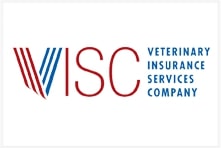By Katie Stryker, CNA Assistant Vice President of Risk Control
This article was originally printed in the Jan/Feb 2023 issue of the California Veterinarian magazine.
 Over the past few years, there has been a steady increase in the number of auto accidents and related fatalities due to risky driving behaviors.¹ This is a stark reminder to businesses on risks associated with not employing safe drivers. Review the steps below to help ensure you are managing your practice’s auto risk.
Over the past few years, there has been a steady increase in the number of auto accidents and related fatalities due to risky driving behaviors.¹ This is a stark reminder to businesses on risks associated with not employing safe drivers. Review the steps below to help ensure you are managing your practice’s auto risk.
Identify and Qualify Your Drivers
Have a company policy that makes it clear to all employees that they are responsible for driving safely during business-related travel. Furthermore, under your policy, it should be clear that anyone who drives a vehicle while conducting business is considered a driver, whether they drive a company-owned or personal vehicle and even if driving is not their sole responsibility or a regular job task.
To qualify drivers, as permitted by law, conduct a prior review of each individual’s motor vehicle records (MVRs) outlining their driving history and record of violations. Ideally, these MVRs should be periodically reviewed throughout the term of employment to ensure that no new violations have occurred.
Recognize Unique Risks
Organizations must consider their unique operational activities when evaluating their auto risk, including whether they transport animals, customers, supplies, or hazardous waste. Accounting for these factors—in addition to planning the safest route—helps drivers prepare for conditions like poor weather, high traffic, and driving in remote areas.
Technology like GPS, navigation, cameras, and telematics systems have increased in sophistication over the past decade, and can help drivers determine the safest route to their destination while limiting unsafe driving behaviors.
Educate Your Staff
Educate all employees who may drive for company-related purposes on the basic risks and responsibilities of driving. Individuals with a higher level of risk based on their driving tasks, such as transporting animals or utilizing trailers, should receive specific training centered on those exposures.
All individuals within an organization have a responsibility to drive safely when engaging in business-related travel. Following these steps will help establish a foundation from which your organization can continue to build a successful auto safety program.
Sources
- https://injuryfacts.nsc.org/motor-vehicle/overview/introduction/
- https://www.iii.org/article/social-inflationhard-to-measure-important-to-understand
- verisk.com/insurance/visualize/the-rise-ofnuclear-verdicts-and-how-to-rein-them-in/
The information, examples and suggestions presented in this material have been developed from sources believed to be reliable, but they should not be construed as legal or other professional advice. CNA accepts no responsibility for the accuracy or completeness of this material and recommends the consultation with competent legal counsel and/or other professional advisors before applying this material in any particular factual situations. This material is for illustrative purposes and is not intended to constitute a contract. Please remember that only the relevant insurance policy can provide the actual terms, coverages, amounts, conditions and exclusions for an insured. All products and services may not be available in all states and may be subject to change without notice. “CNA” is a registered trademark of CNA Financial Corporation. Certain CNA Financial Corporation subsidiaries use the “CNA” trademark in connection with insurance underwriting and claims activities. Copyright © 2024 CNA. All rights reserved.









 Over the past few years, there has been a steady increase in the number of auto accidents and related fatalities due to risky driving behaviors.¹ This is a stark reminder to businesses on risks associated with not employing safe drivers. Review the steps below to help ensure you are managing your practice’s auto risk.
Over the past few years, there has been a steady increase in the number of auto accidents and related fatalities due to risky driving behaviors.¹ This is a stark reminder to businesses on risks associated with not employing safe drivers. Review the steps below to help ensure you are managing your practice’s auto risk.
